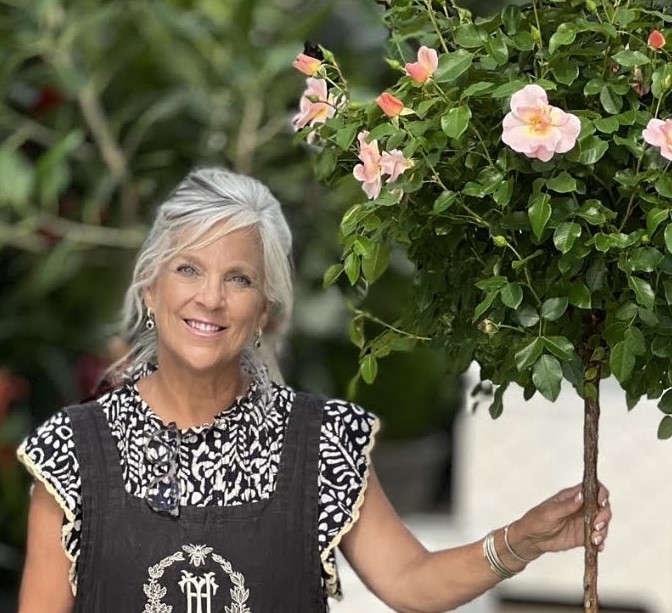Does Spanish moss kill trees? The experts advise
Learn the effects Spanish moss has on your trees before you start unnecessarily removing it – professionals say that it may not be as bad as you think


Tillandsia Usneoides, also known as Spanish moss, is an epiphytic plant that primarily relies on trees for support, and isn't parasitic in the traditional sense. Spanish moss attaches itself to tree branches and trunks, using them as a substrate to anchor itself and absorb moisture and nutrients from the air and rainfall.
While heavy infestations of Spanish moss can potentially block sunlight and hinder the tree's photosynthesis process, leading to weakened growth in certain cases, Spanish moss killing trees is a gardening myth that is rarely the sole cause of tree death.
‘Trees that are already weakened or stressed due to factors such as disease, poor soil conditions, or drought may be more susceptible to damage from Spanish moss infestations,’ says Tricia Hunt, plant expert and owner of Millstone Market & Nursery, in Tennessee. ‘In such cases, the presence of Spanish moss can exacerbate existing problems and contribute to further decline in tree health, rather than being the direct cause.’

Tricia is the owner and operator of Millstone Market & Nursery, located in the heart of Germantown, Tennessee. Tricia has grown and used moss for several years, appreciating the utility of this green groundcover.
Spanish moss explained

Being an epiphyte (a plant that grows and lives on any other type of plant) Spanish moss does not penetrate the bark to take nutrients from the tree directly, however, plant expert John Negus suggests the relationship between Spanish moss and trees is more nuanced than a simple yes or no answer, and should be factored in when learning how to choose the perfect tree for your yard.
While Spanish moss doesn't kill trees and is often used decoratively in ornaments, such as when exploring how to make a terrarium, it can have indirect effects that might compromise the health of some trees and plants under certain conditions. We explore a range of factors to consider below:
Weight: In large quantities, Spanish moss can become quite heavy, especially when wet. In areas prone to high winds or storms, this additional weight can increase the risk of branch breakage or tree uprooting, particularly in older or weaker trees. Removing moss from trees is therefore important in maintaining overall tree health.
Shading: Any dense growth of Spanish moss might shade out a significant portion of a tree's leaves. Excessive shading by Spanish moss may limit the tree's ability to photosynthesize and grow, particularly in lower branches where the moss is densest. When Spanish moss becomes overly abundant, it can compete with the tree for sunlight and nutrients. If your trees are noticeably deficient in nutrients, you can use a set of Organic Fertilizer Spikes, like these from Amazon, to effectively deliver nutrients and minerals to your trees.
Design expertise in your inbox – from inspiring decorating ideas and beautiful celebrity homes to practical gardening advice and shopping round-ups.
Air Circulation: The dense growth of Spanish moss may challenge the air circulation around tree branches, creating conditions for fungal diseases such as sooty and white mold. White mold grows on the sugary excretions of aphids and scale insects, which can be attracted to Spanish moss.

John has been a garden journalist for over 50 years and regularly answers readers' questions in Amateur Gardening magazine. He has also written four books and has delivered many talks over the years on horticulture.
How to manage Spanish moss

For trees heavily laden with Spanish moss, especially those showing signs of stress or decline, Tony O'Neill from Simplify Gardening shares some helpful management tips.
Selective Removal: If a tree is excessively draped with Spanish moss, consider gently removing some of it with a spray mixture of water with potassium bicarbonate, like this from Amazon to alleviate weight and improve light penetration and air circulation. Once sprayed, gently use a moss removal tool, like this tool from Amazon to scrape it off. This should be done carefully to avoid damaging the tree.
Health Assessment: Trees heavily affected by Spanish moss might already be in poor health for other reasons. Assess the tree for other health issues such as disease, pests, or environmental stress. Addressing these underlying issues can bolster the tree's overall health, making it less susceptible to any indirect stress from Spanish moss.
Professional Consultation: In cases of valuable or historic trees, consulting with a certified arborist can provide tailored advice and management strategies to ensure the tree's health and safety.

Tony O'Neill is a gardening expert, author, and educator. With a thriving YouTube channel boasting 405,000 subscribers and over 1.4 million monthly views, along with his award-winning website Simplifygardening.com, he shares his passion for gardening and sustainability. He has also authored Composting Masterclass, Your First Vegetable Garden, and Simplify Vegetable Gardening, empowering individuals to cultivate their own green spaces.
FAQs
Does Spanish moss grow on all trees?
No, Spanish moss only grows on trees in humid areas, typically on trees found near rivers, lakes and coastal plains.
Spanish moss is not a direct tree killer. It coexists with trees as part of a balanced ecosystem, especially in environments conducive to its growth. However, understanding its potential indirect effects, and managing those appropriately, can help to ensure your trees remain happy and healthy.

Seraphina is a contributing editor at Homes & Gardens, writing Solved features on organizing and storage. She loves to decorate and also grow her own produce from her home in London. Her previous experience includes working at Women's Health and Fabulous Magazine.